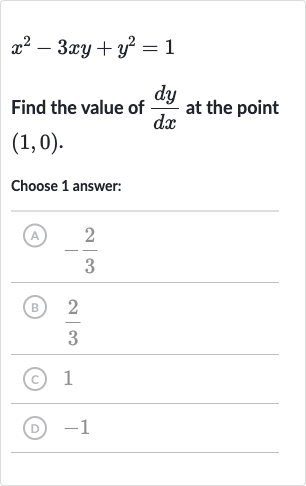Full solution
Q. Find the value of at the point .Choose answer:(A) (B) (C) (D)
- Differentiate Equation: Differentiate both sides of the equation with respect to using implicit differentiation.
- Apply Product Rule: Apply the product rule to : . So, .
- Substitute Values: , and because is a function of . So, .
- Simplify Equation: Now plug in the point into the differentiated equation..
- Solve for : Simplify the equation: .
- Solve for : Simplify the equation: . Solve for : ..

